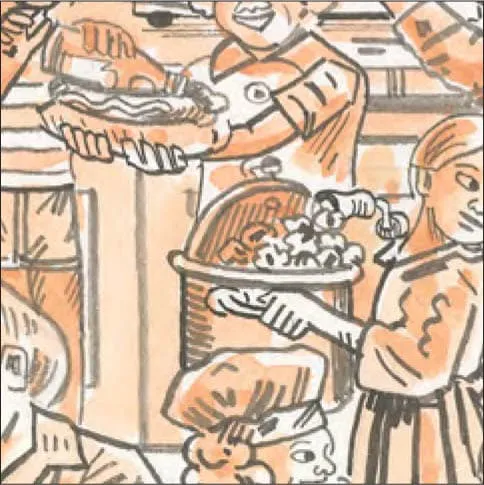
How it All Works
Scientific laws and phenomena illustrated & demonstrated
Adam Dant, Brian Clegg
- 160 pages
- English
- ePUB (adapté aux mobiles)
- Disponible sur iOS et Android
How it All Works
Scientific laws and phenomena illustrated & demonstrated
Adam Dant, Brian Clegg
À propos de ce livre
In this beautiful and unique combination of art and science, this stunningly detailed book examines how the rules of science govern the the world around us, from the rooms in our houses to the planet, the solar system and the universe itself! The Universe is inconceivably complex. Its component parts though follow a set of unbreakable laws that have somehow been coded into their very fabric since the beginning of time. These laws play out in different ways at different scales, giving rise to the familiar phenomena of everyday life – as well as the unfamiliar abstract goings-on outside our experience and awareness. Understanding these laws may seem a daunting task, until now. How it All Works illustrates simply how the most interesting and complex named scientific laws and phenomena affect everyone's daily lives. Using hyper-detailed scene illustrations from the incredible award-winning artist Adam Dant, we start small, with the illustrated science inside your kitchen, before expanding outwards to encompass your garden, street, city, continent, planet, solar system, galaxy and eventually the whole universe. With tiny details pulled out from visually stunning and intricate scene, learn how:
- Kirchhoff's Law affects how you charge your phone,
- Newton's Law of Cooling helps you makeyour coffee just the right temperature to drink,
- How the rules of antimatter are used in hospitals for medical imaging,
- How Cassie's law keeps ducks dry,
- How glaciation shapes the ladscapes around us,
- How thermohaline circulation dictates our weather, and
- How quantum tunnelling influencesthe nuclear fusion in our sun, and Wien's Law determines its colour.
This book will astound and inform in equal measure, with each principle drawn into the scene andexplained with clarity by leadingscience writer Brian Clegg. With a reference section at the back as well as profiles of the key figures who have helped shape our understanding of these key principles, from Lynn Margulis and Richard Feynman to Marie Curie, Michael Faraday, Isaac Newton and Albert Einstein, this beautiful and unique visual examination of the rules of science is an must-have book for anyone who wants to understand the physics, chemistry and biology of the world around us!
Foire aux questions
Informations
The Kitchen











